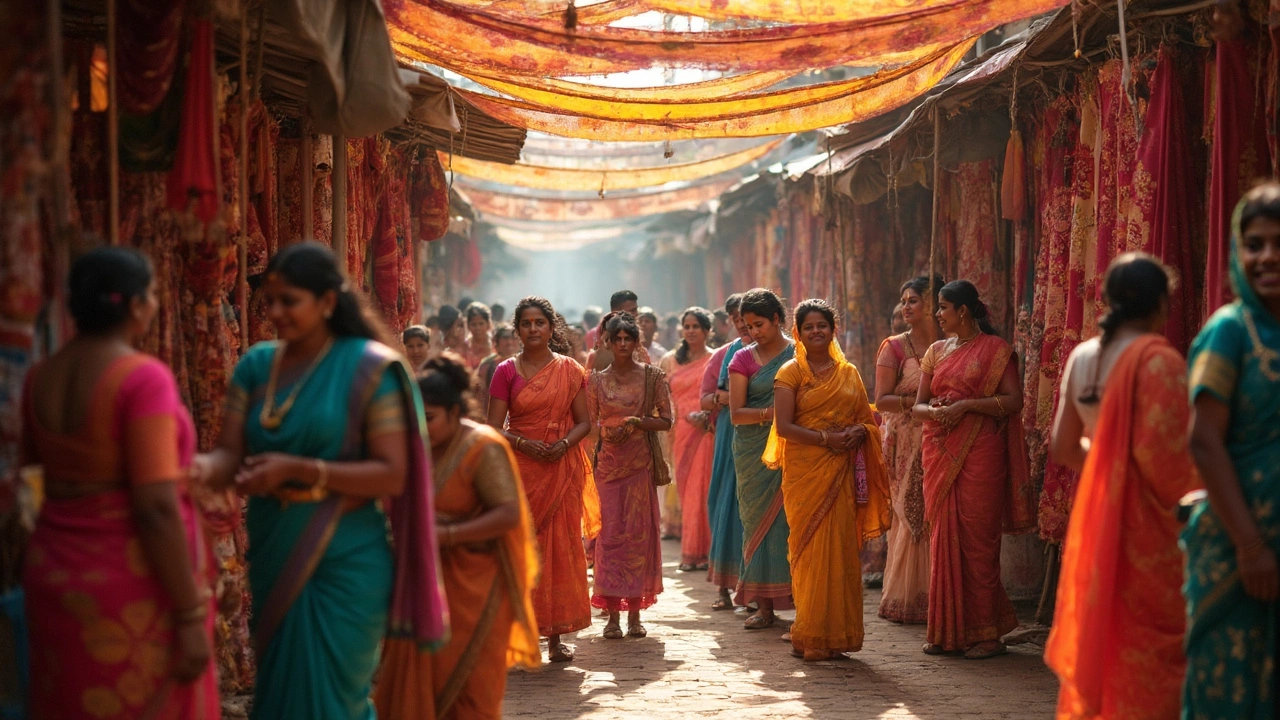Famous Indian Fabrics You Need to Know
India’s textile scene reads like a colorful map of history, culture, and climate. Whether you’re a designer, shopper, or just curious, knowing the standout fabrics helps you pick the right feel, look, and price. Below is a fast‑track rundown of the most talked‑about Indian cloths.
Top Classic Fabrics
Silk – Indian silk isn’t one material; it’s a family. Banarasi silk from Varanasi dazzles with gold and silver brocade, perfect for weddings. Kanchipuram silk from Tamil Nadu sports vibrant reds and yellows woven with zari threads. Mysore silk offers a smoother, matte finish that works well for formal suits.
Cotton – When the weather turns hot, cotton saves the day. Khadi, hand‑spun by Gandhi’s followers, feels soft and breathable while supporting villages. Calico, a plain‑weave cotton from Andhra, is a staple for everyday shirts and summer dresses. Organic cotton from Gujarat is gaining popularity for its eco‑friendly credentials.
Bandhani – This tie‑and‑dye technique creates tiny dots that burst into bold patterns. Rajasthan and Gujarat are the hubs, and the fabric shines in bright reds, yellows, and indigos. Bandhani works great for skirts, dupattas, and festive tops.
Ikat – Ikat’s blurred, feather‑like designs come from pre‑dyeing the yarn before weaving. The state of Odisha produces the famous Sambalpur Ikat, while Gujarat’s Patola Ikat marvels with double‑weave precision. Ikat fabric is a statement piece for jackets and sarees.
Chanderi – Light, sheer, and slightly glossy, Chanderi comes from Madhya Pradesh. It blends silk, cotton, and zari for a fabric that drapes like a dream. Perfect for office wear and brunch sarees.
Pashmina – When you think of luxury, think Pashmina from Kashmir. This fine cashmere‑blend feels like a hug and is usually seen in scarves and shawls. It’s pricey, but a single piece lasts years.
How to Choose & Care for Indian Fabrics
First, decide the purpose. For daily wear, go for cotton or khadi – they’re low‑maintenance and breathable. For special occasions, silk, Banarasi, or Pashmina add gravitas. Check the yarn count; higher counts mean smoother texture and longer life.
Next, think about care. Most cottons survive machine wash on a gentle cycle. Silk and Pashmina need hand‑washing or dry‑cleaning to keep the fibers intact. Bandhani and Ikat can fade if exposed to harsh detergents, so use mild soap and cold water.
If you buy online, look for certifications like “Handloom Mark” or “GI‑Tagged” (Geographical Indication). Those tags guarantee authenticity and help support the artisans behind the cloth.
Finally, play with pairing. A Banarasi silk blouse looks stunning with a plain cotton skirt, while a Bandhani dupatta can brighten a neutral kurta. Mixing textures is a quick way to add visual interest without overdoing it.
India’s fabric heritage is vast, but these standout types give you a solid starting point. Whether you’re building a wardrobe, sourcing material for a collection, or just bragging about your knowledge at a dinner party, you now have the basics in hand.

What Textile Is India Famous For? Unraveling the Fabric Legacy
India stands out globally for its rich and diverse textile heritage. From legendary cottons and silks to vibrant handlooms, Indian fabrics are world-renowned for their quality and unique traditions. This article explores which textiles are closely tied to India's identity, highlights their global impact, and offers practical pointers for sourcing or appreciating them. You'll get tips about how to spot authentic Indian textiles and why certain regions excel in particular fabrics. If you want the lowdown on what makes Indian textiles tick, you're in the right place.
Read More